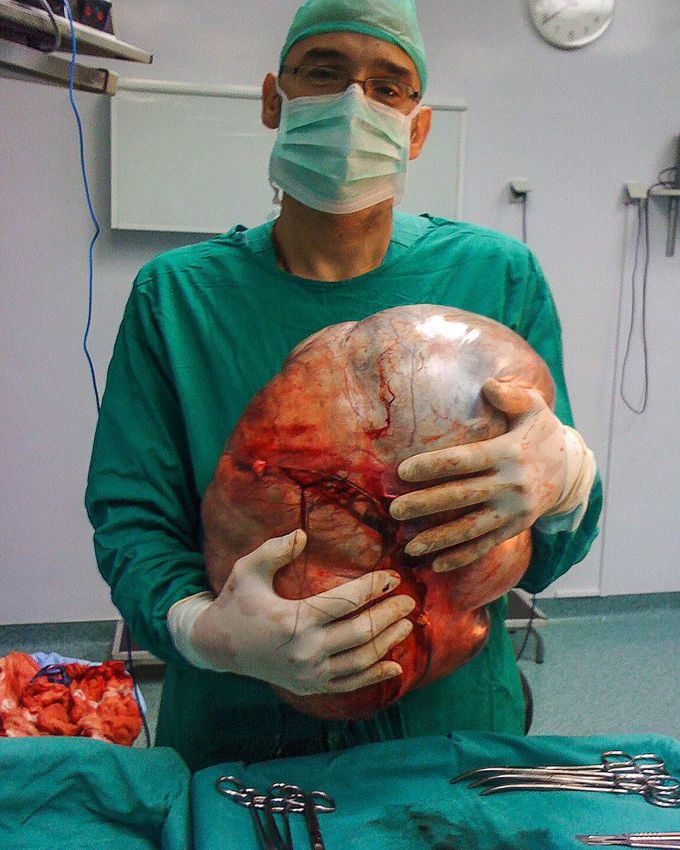


It’s a good day to hold an enormous ovarian cyst!!
This is a common slow-growing epithelial ovarian tumor that in most cases has low malignancy potential, hence being benign. They are not cancerous and do not spread or metastasize and usually presents as a single mass within the ovary, or can occur as multiple masses within a single ovary. Due to its huge size, the patient experiences symptoms, such as abdominal pain, vaginal bleeding, and increased abdominal size. Although the condition is extremely rare, it is a potentially dangerous in its massive form if not timely diagnosed by imaging studies (ultrasound, CT, biopsy of a specimen) and managed properly by surgery. Very big ovarian cysts may lead to ovarian torsion, or if ruptured, it may cause severe pain and lead to internal bleeding. Cystic ovarian masses that develop after menopause may be cancerous (malignant), which essentially requires proper examination and surgical excision with no delay. Photo by @dmmal_gr



